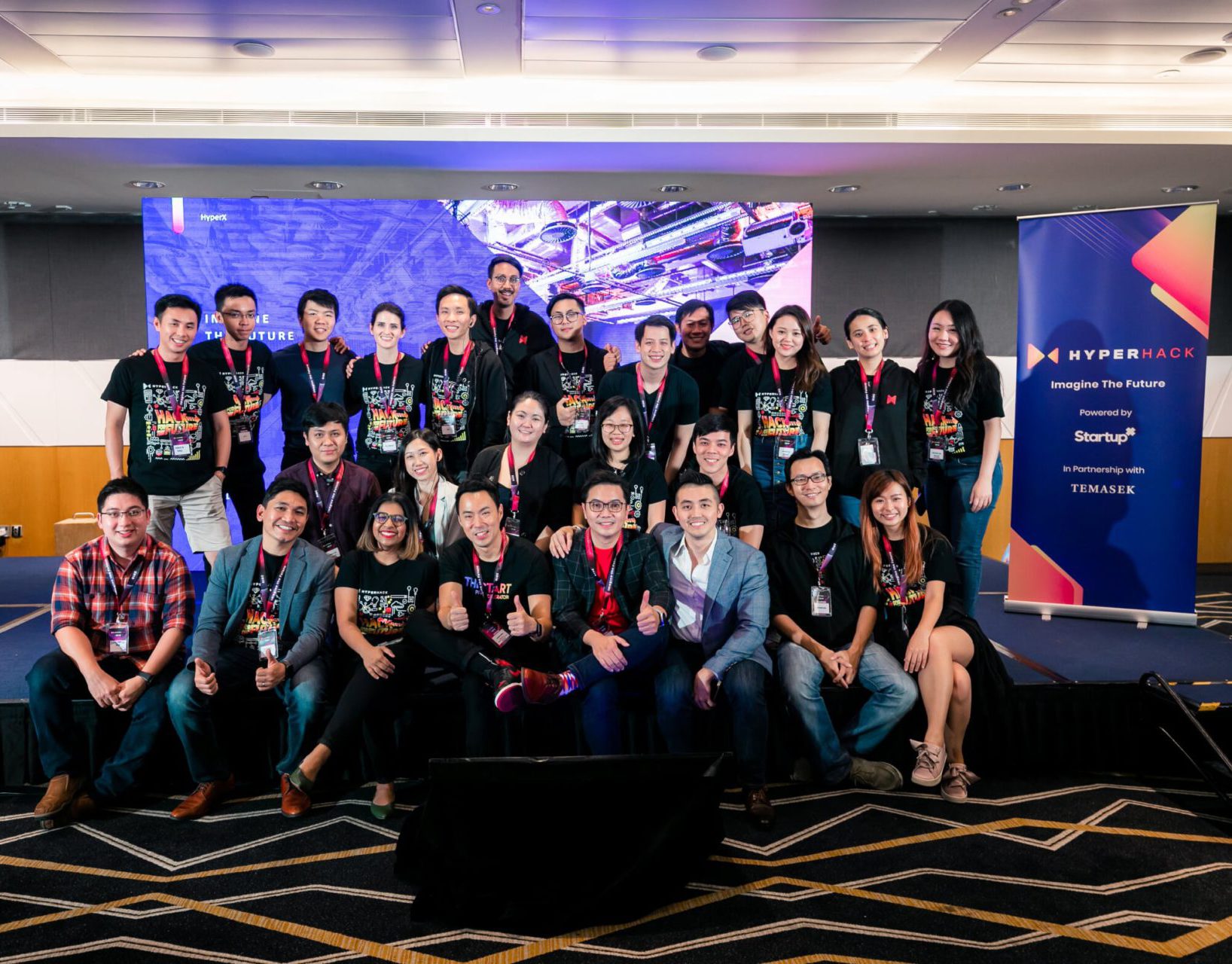There’s no doubt that the world is changing rapidly; faster than any era before this.
A decade ago, it was unimaginable to own refrigerators that would be able to inform us when we are running low on groceries, yet now we are in the era of the ‘Internet of Things’. Every second we see 127 new IoT devices connected to the web and in 2019 there were a total of 26.66 billion active IoT devices. As technology changes, it becomes more affordable and readily available, making it easier for masses with ideas to build a product that can potentially change the world. Just look at how Airbnb and Uber have revolutionised the hospitality and transport industry. Looking at the pace of change, there is no guarantee that companies with a significant customer base and revenue will make it in this digital era if they continue to remain status quo.
With this constant threat, corporates have been exploring different ways to integrate innovation into the organisation. One successful corporate that has consistently innovated is Samsung. The South Korean conglomerate first introduced the C-Lab innovation programme in 2012 to nurture in-house ventures and established the Samsung Global Innovation Center to drive innovation globally subsequently. In 2013, the South Korean conglomerate spent $13.4 billion which is equivalent to 6.5% of its total revenue to find new ways to grow, innovate and improve. Over the past six years, the tech giant spun off 40 companies and registered 6,469 new patents in the U.S. ranking them as the second-highest patent winner in the U.S.
With such a positive outcome, it’s surprising to see that corporate accelerators that came into existence in 2010 surged to over 120 but dropped to 71 active programmes in 2017. Let’s take a look at what led to the downfall of most corporate accelerators.
Challenges of Corporate Accelerators
Challenge #1 – Misalignment in objective & mindset
One of the most paramount decisions for corporate accelerators is to identify the objective of why the organisation is running the accelerator programme. This would dictate every aspect of the programme, ranging from how it should be conducted, the strategies as well as the type of startups that would be brought in. Most corporates running an accelerator programme came in with the intention to run a self-sustaining and profitable accelerator. They expect the startups in the programme to function like other business units within the organisation and generate revenue from Day 1. Audits are conducted annually to evaluate the success and performance of a department or programme and they expect to see growth and returns in the reports.
On the other hand, startups need time to validate, prototype and scale before their first taste of success. More often than not, the amount of time startups take to succeed is deemed as too long in corporate terms. For example, Airbnb was conceptualised in 2007, it took two years for them to launch, grow and raise their seed round, and they only became profitable in the second half of 2016 (after 9 years!).
An interview with Marc Shedroff, COO of Samsung Global Innovation Centre (GIC) revealed that one key factor that contributed to their success was alignment and communication. They spent a lot of time aligning with the entrepreneurs they work with on what they can expect from GIC which helped to remove distractions and empower both teams to deliver.
Without alignment in objective and timeline, corporates are more likely to write off the potential and success of a startup after 1 run which eventually led to premature termination of the programme.
Challenge #2 – Corporate mentors lacking in startup experience and commitment
Experience is a valuable asset that cannot be bought; yet it is critical to the success of a business. The insight that startups can learn from books is incomparable to learning from a mentor that has walked the path before. In most corporate accelerators, the organisation works with startups that generate solutions for their industry. They would introduce mentors within the organisation that are experts in the industry and would be able to equip the startups in the programme with domain knowledge. This information would be useful when the teams are trying to validate and build their prototype but it poses a problem when the startups go beyond that stage. While they are experts in their domain, they have limited entrepreneurial experience. Without going through the trenches themselves, the corporate mentors would only be able to provide theoretical academic knowledge to help the startups.
On top of that, mentors of the corporate accelerators hold a day job within the organisation and are not compensated based on the success of the corporate accelerator. It’s no secret that it takes long hours, numerous of trial and error, multiple iterations before a startup can thrive. With little incentives, this makes it harder to find mentors with relevant experience and expertise to commit the excessive hours to mentor the startups in the programme.
The amount of dedicated resources and budget that each organisation is willing to invest plays an important role in dictating the fate of the corporate accelerator.
Challenge #3 – Lack of corporate-startup collaboration
It is estimated that 90% of startups fail. To mitigate this, startups join corporate accelerator programmes to gain access to the corporate’s network, expand their revenue stream as well as for the reputation boost of working with renowned brands in the industry. In return, corporates would be able to leverage on startups creativity, innovative ways of working and new technologies.
While this relationship would often start out positively, having an accelerator programme does not necessarily equate to the collaboration working out automatically. Effective collaboration is often hindered by how corporates are structured, the organisational culture and internal processes. For startups, one of the challenges they see in corporate-startup collaboration is the long cycle times and slow decision-making from the corporate team as multiple departments and layers of approval are involved in any decision made. The collision in organisational structure and strategy would cause corporate – startup collaboration to start off on the wrong foot which eventually leads to futile effort and frustrations.
While the future of corporate accelerators might seem bleak, not all is lost. There are still corporate accelerators out there that are thriving and generating stellar startups.
Let’s take a look at what has been done right.
Strategy #1 – Alignment of short term goals with long term decisions
As mentioned earlier in the article, having a unified goal between the corporates and startups is a critical factor to determine the success of the programme. Taking time out to align the goals of the corporates and startups as well as getting the buy-in on the monetary and timeline from the various business units within the organisation is essential prior to the launch of the programme.
Insights from the business units will help to set the direction of growth and change required by the organisation and will provide greater clarity on the goals, models and strategies that the corporate accelerator should adopt. Looping in the decision makers on the onset would ensure that key stakeholders in the corporate accelerator are involved and prevent the programme from being a lost cause. With the full support from the business units and understanding that it takes time for corporate accelerators to generate success, this increases the likelihood of the programme taking off.
Besides setting and aligning the goals, regular check-ins with the various stakeholders to evaluate the progress is necessary. The check-ins allow all parties involved to address their hopes, expectations, iron out frustrations and introduce changes when needed to keep the programme moving towards the final goal.
Strategy #2 – Creating opportunities for the community
Besides funding, a key draw for startups to join the corporate accelerator programme is the network that corporates bring. To attract high potential startups, corporates should leverage on their connections and bring various stakeholders of the ecosystem together.
To support the growth of early-stage tech startups in India, Airtel launched their corporate accelerator programme in 2019. This allows startups in their programmes to gain access to opportunities and distribution networks that they would not usually be able to. At the same time, Airtel can value-add their corporate partners by introducing creativity, providing technology and value-adding to the services they provide. Through building up the ecosystem, it brings in product adoption and partnerships opportunities which value-adds all the key players of the ecosystem and strengthens the offer of the corporate accelerator.
Learning from the startups that have been through StartupX’s programmes, they would first launch in their home market before scaling to the region. However, they often face challenges trying to navigate through the diverse market, complex policies as well as language barriers. Tapping on the corporates network when expanding into new grounds would increase their chances of success. For instance, the SAP IoT Accelerator, offers startups their customer base and platforms to their startups, allowing the teams to test their ideas while they expand.
At the end of the day, the corporate accelerator is not merely a trend. To keep the corporate accelerator model alive, corporates would need to be more proactive and rewrite the rules of the game by focusing on the basic principles of pragmatism, aside from all the hype and buzzwords. In a market where there are limited high potential startups, only by improving the offers, refocusing their budget and resources would ensure the success and continuity of corporate accelerators.








